गोआ
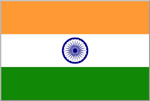
Indian Ocean shoreline paradise

Hugely popular with foreign holiday makers for its sandy beaches and year-round warm weather, Goa is India‘s answer to the Costa del Sol, replete with loud nightclubs and as much raucousness as the nation will permit. The state of Goa lies a few hundred miles south of Mumbai, with most of the established resorts to the north of the Goan capital Panaji, (still known as Panjim in English), and much quieter beaches to the south. Conquered by the Portuguese during the early 1500s, it did not become part of modern India until its annexation in 1961. Much Portuguese influence remains today, including in family names.
Our trip to Goa was only three nights long, arriving from Mumbai and returning to Delhi by SpiceJet, we stayed in Calangute which is one of the most established and easily accessed resorts. Goa is one of the wealthiest regions of India, and it was apparent that there was much less poverty than elsewhere on our travels. The distinct lack of overdevelopment is certainly part of its appeal (much like Sri Lanka) and we encountered the most lively nightlife we found in India, which alas wasn’t saying much due to the mid-December lack of backpacking twenty-something tourists.

Beach shacks of Calangute, many of which served excellent curry as advertised. Our first arrival was at night, and I was surprised to see villages all around the horizon out to sea. In the bright light of day it was apparent that they were in fact dozens of giant ships sitting offshore, some visible in the header image.
The header image gives a very skewed reflection of beach occupancy – this shot is much more accurate. I had to wait quite a while for a clear shot of the outrigger – the beach was absolutely rammed by day.
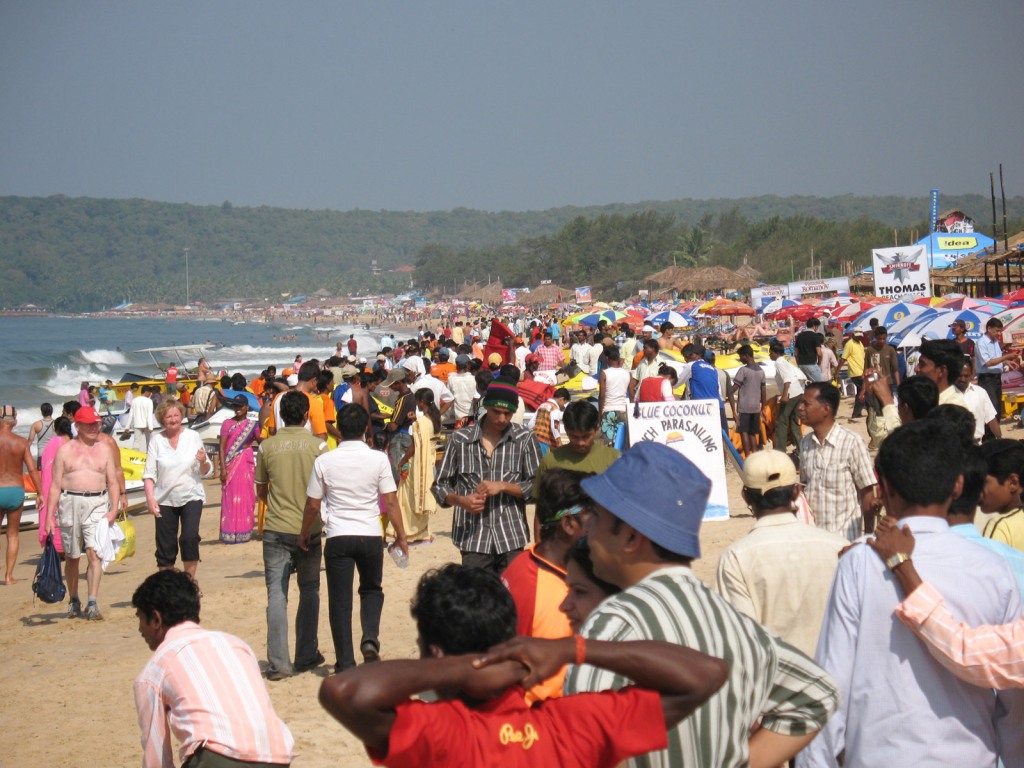
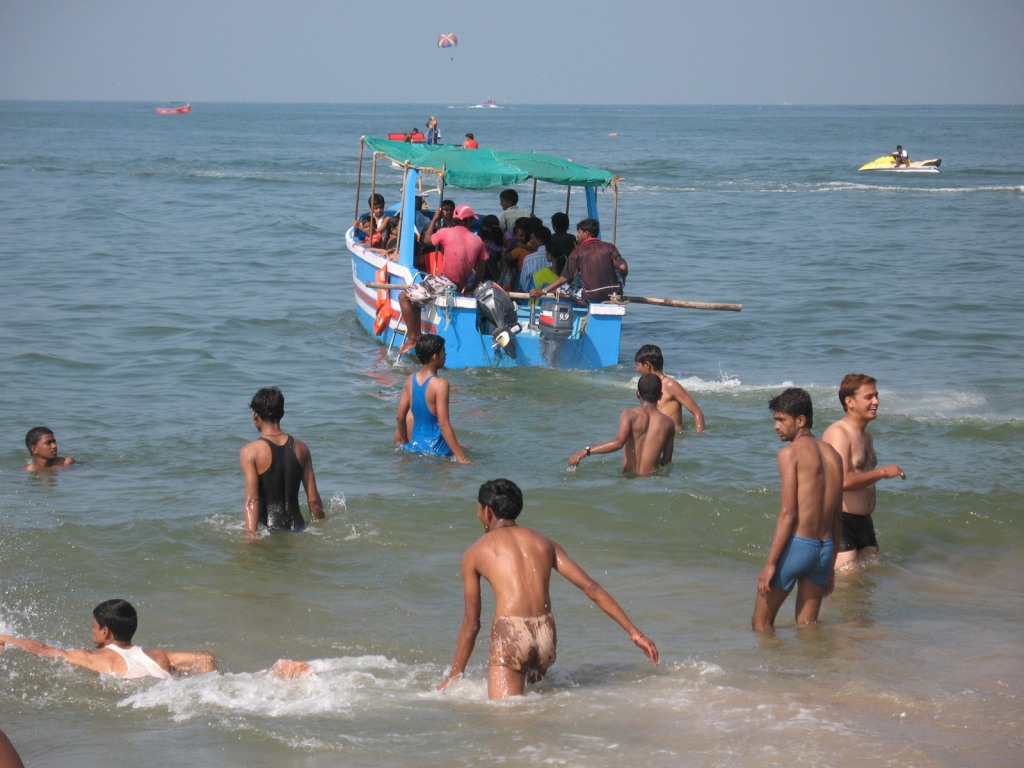
A grand old time being had in the warm waters of the Arabian Sea.
Parasailing and other aquatic activities abound. Not sure what’s happening with this boat though, and the proliferation of blue smoke in the hull. Massive bulk carriers sit offshore.


Calangute town itself, on the main street Fort Aguada Road. Most of the shops sold t-shirts and souvenirs, it was very much a tourist trap.
Tuk-tuks aplenty sit waiting for custom. I opted to travel in style and rented a full taxi for the afternoon while my travelling companions hired scooters to explore locally.


My taxi driver whisked me away from my fellow Johnny foreigners, into the old town of Panjim, the colonial Goan capital, to see what the Portuguese had left behind. Sé Cathedral de Santa Catarina and the Church and Convent of St Francis of Assisi was our first stop, and did not disappoint.
Inside Sé Cathedral there was a welcome cooling quietness.
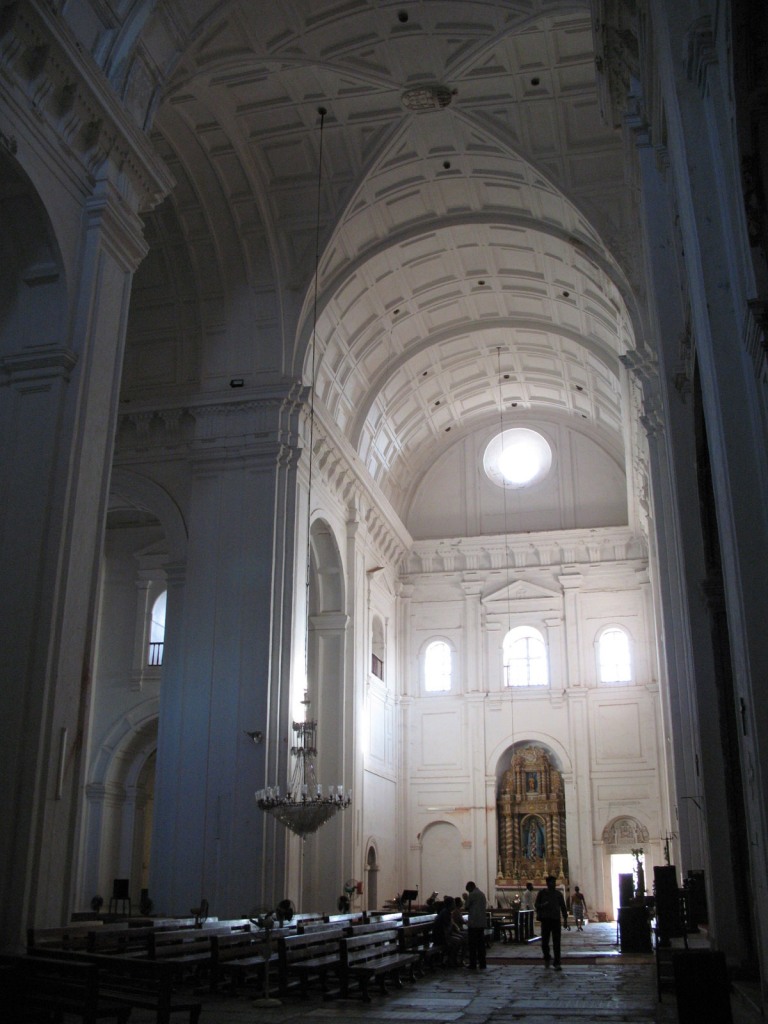

Onwards to the Basilica of Bom Jesus, another legacy of the Portuguese and rapidly built in only ten years, opening in 1605.
Inside the Basilica of Bom Jesus, the mortal remains of St Francis Xavier are interred in this silver casket. He was said to have healing powers, and his body has been preserved without chemicals since his death in 1552. Other saintly remains I have seen include the arm of St Vincent in the cathedral of Valencia.
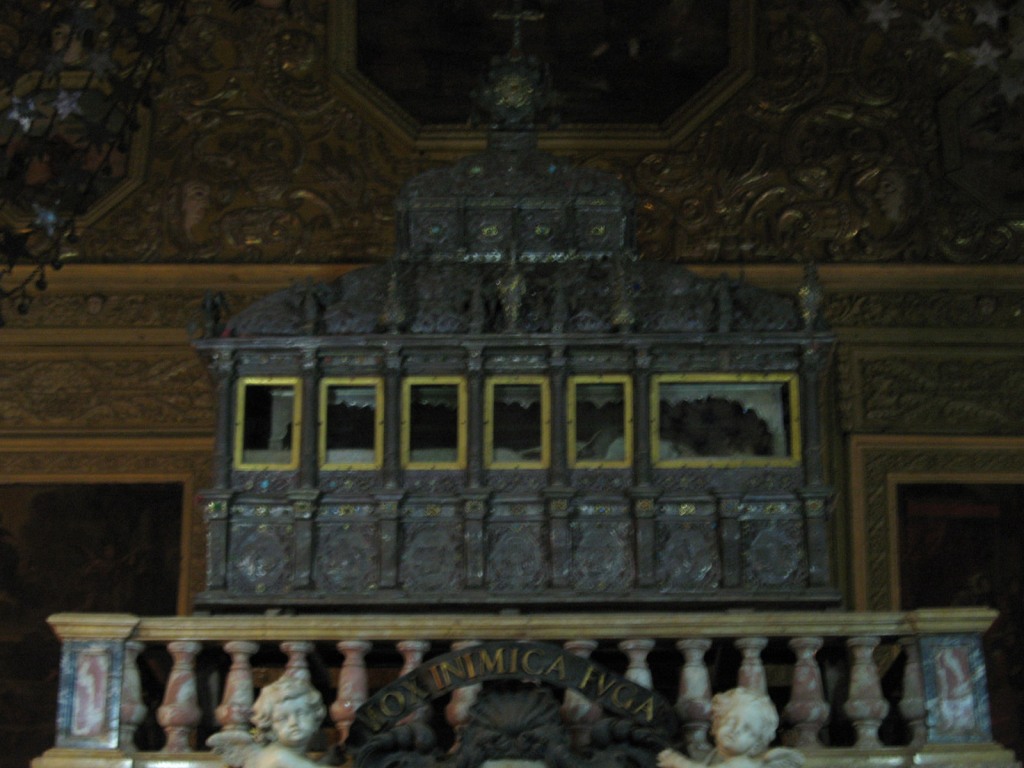
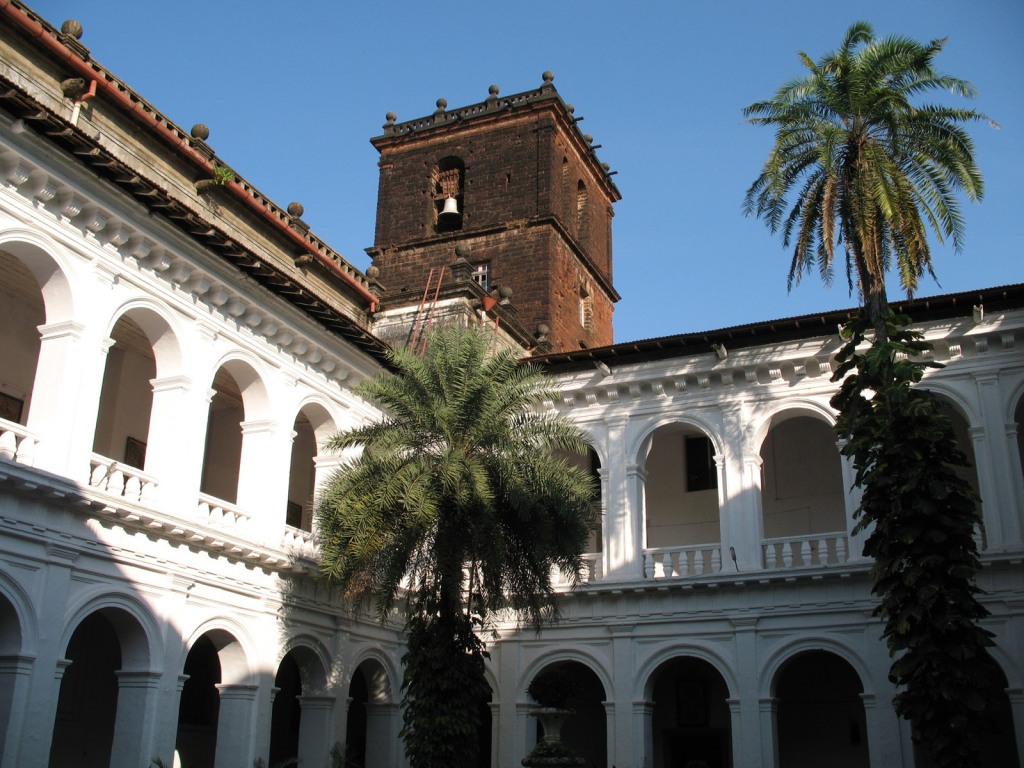
The Basilica also has a very pleasant courtyard. For a few minutes, it didn’t feel like I was in India anymore, except for the nagging feeling that my lunchtime curry was giving me.
The Archaeological Survey of India is keeping things in check, with Sé Cathedral bathed in early evening sunshine.
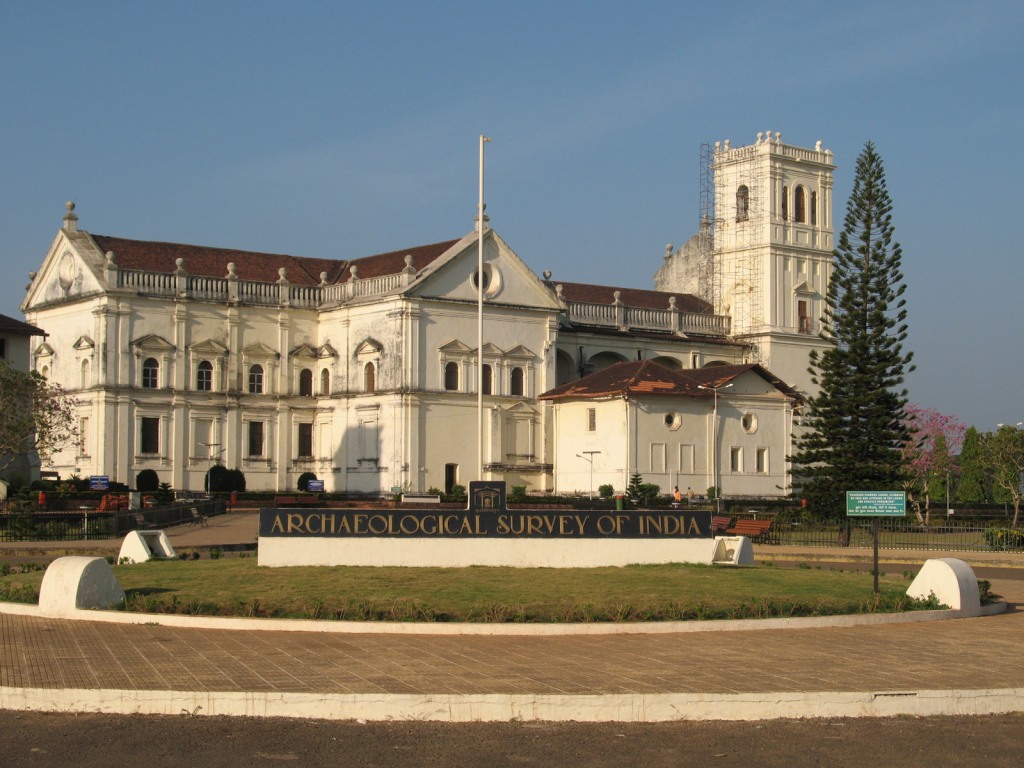

The statue of Jesus outside the entrance to Sé Cathedral. The cathedral itself was completed in 1619.
Back in central Panjim, Our Lady of the Immaculate Conception Church was looking especially good in the fading light. It of course also dates to Portuguese colonial days, completed in 1609.

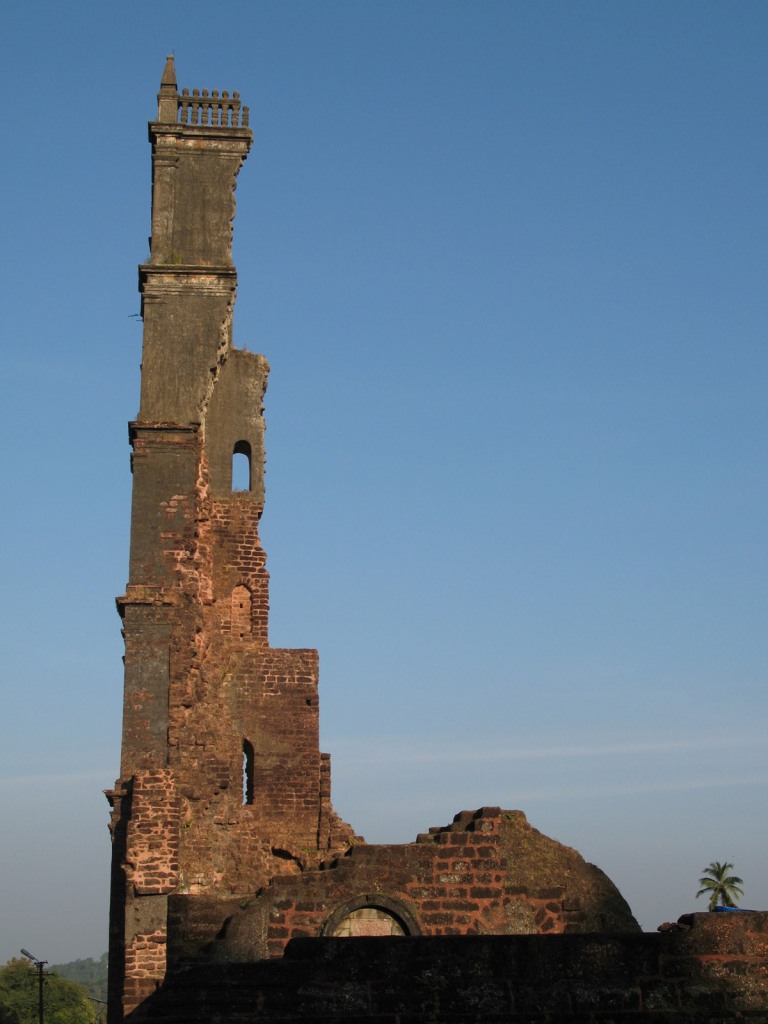
Not everything was in such good shape: only a fragment of the Church of St Augustine’s tower remains, with most having crumbled away, although what remains quite impressively still reaches full height. It was abandoned in 1835 and has partially collapsed on several occasions since.
Goa Medical College is another of Panjim’s landmark locations, dating back to 1691 it is one of the oldest in the whole continent.
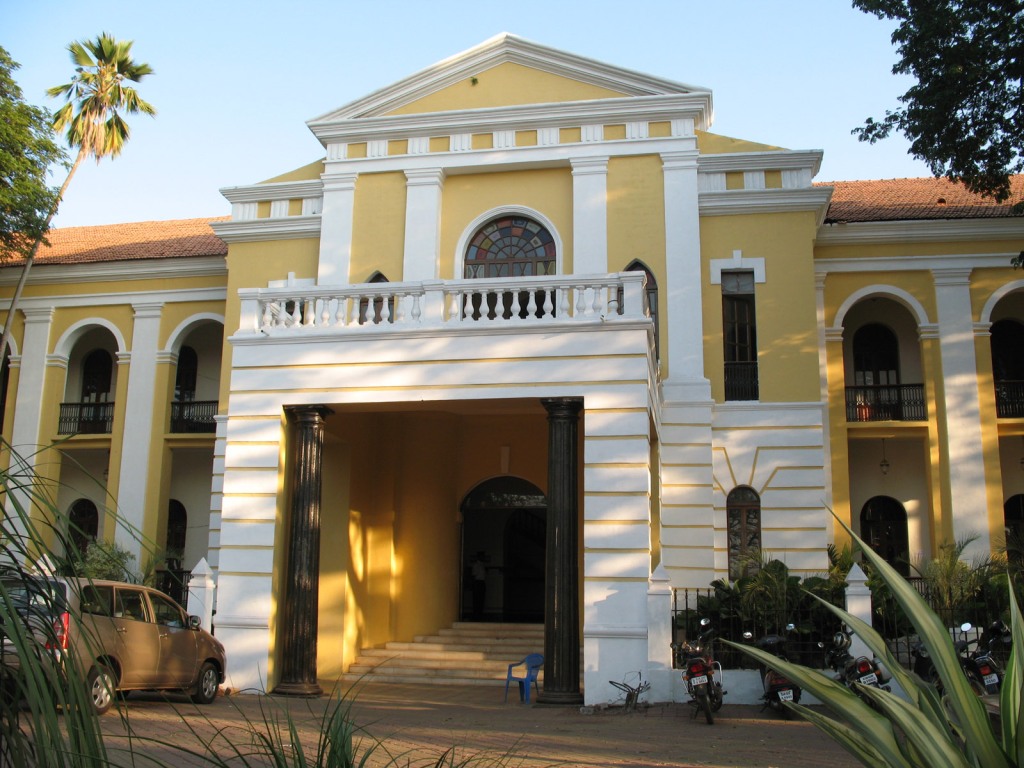
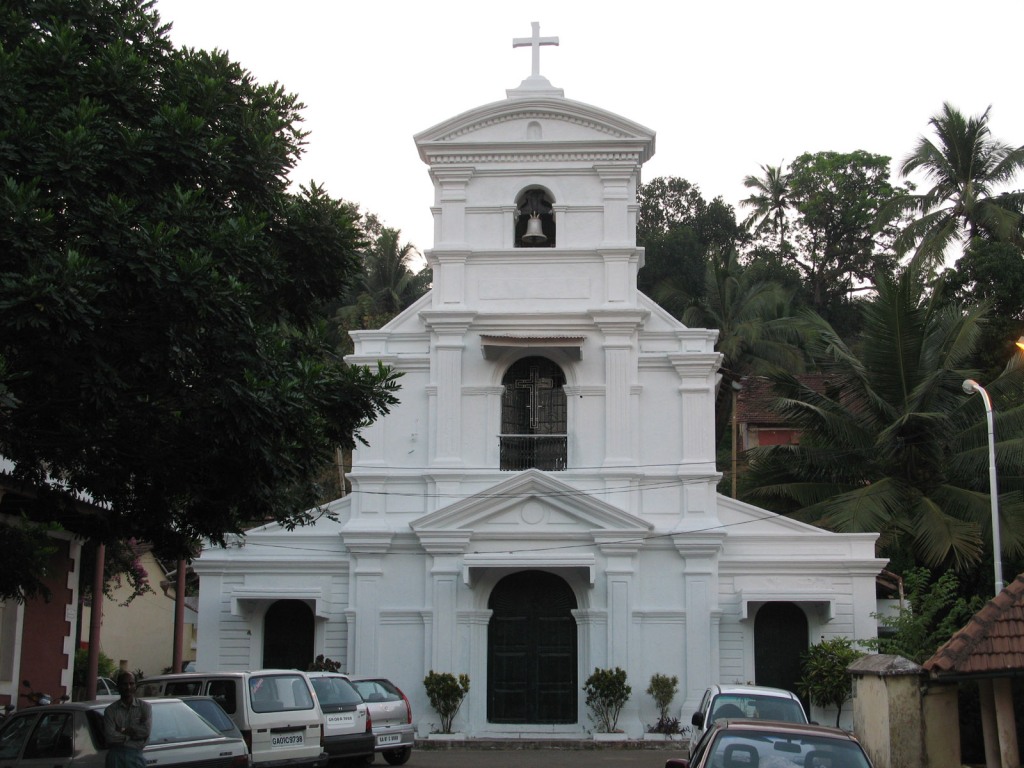
Yet another Portuguese church, unfortunately I’m unable to figure out which one this is – quickly snapped when passing by.
The Mandovi River splits the state of Goa into its northern and southern halves, with Panjim sitting on the south bank. Cargo vessels that have seen better days travel tentatively up the shallow channel.


Back on Calangute beach, and the juxtaposition of India’s conservative clothing norms with sun, sea and sand continues to fascinate me. It is of course a result of my ignorant European upbringing, but it must be nice not to have to worry about being beach-body ready – a constant summer concern of mine.
Conservative clothing does not extend to all in India – this bethonged geezer was having a rare old time strolling about the beach on his hands.
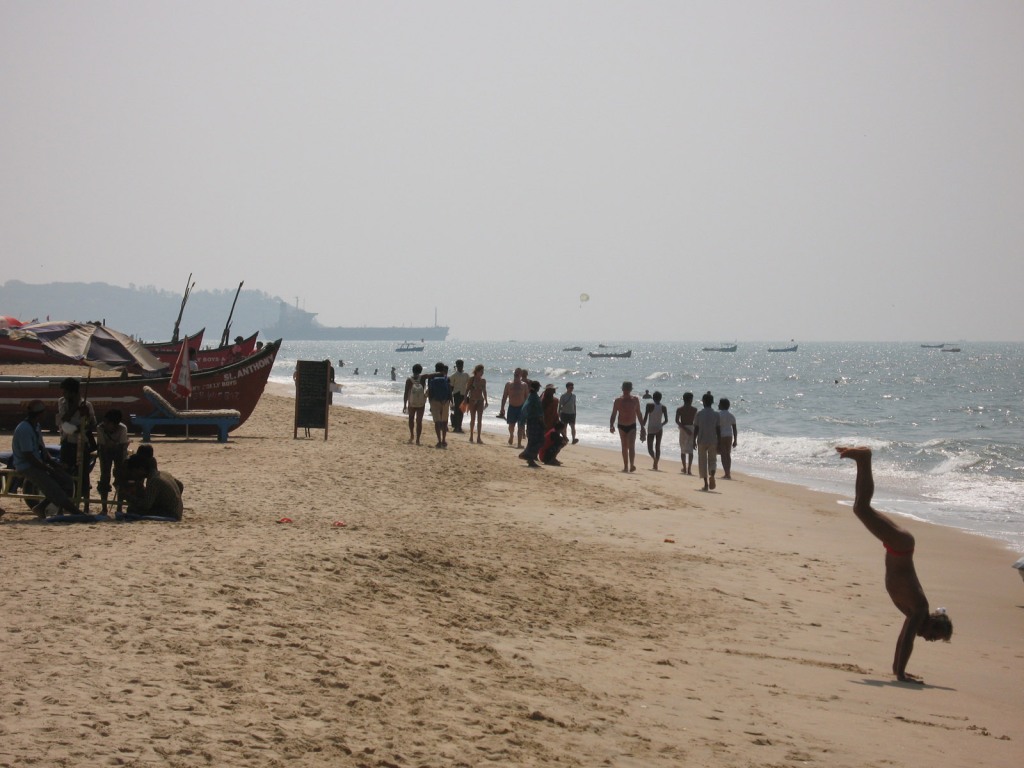
Created 2008 | Updated 2023
